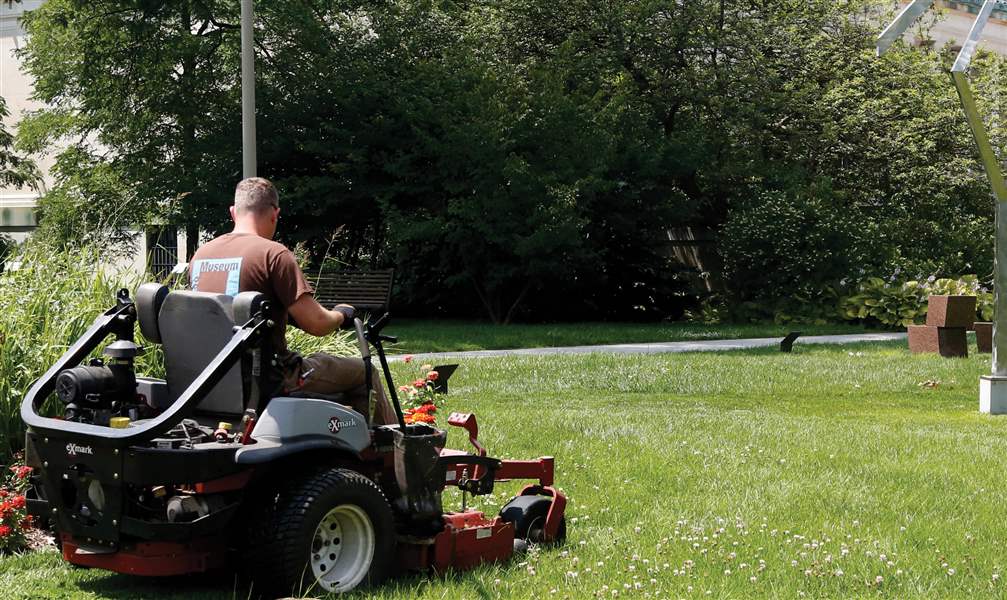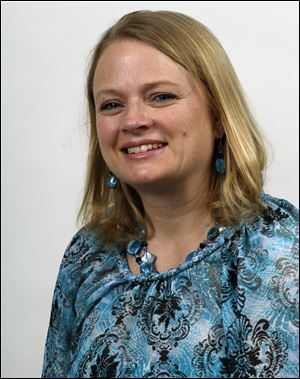
GARDEN
Make others green with envy
8/29/2018
I once heard someone say “the lawn is the canvas where the rest of the landscape is painted.” The lawn can have a variety of purposes, provide many functions, and its appearance can vary greatly. Just take a look at lawns in your neighborhood, or on your next drive. You will likely see high maintenance vs. low maintenance, and grass cut very short vs. grass that may leave you wondering when it was last cut.
A lawn is a personal preference. Some people enjoy investing large amounts of time, energy, and dollars, while for others, it is a low priority at best. And of course many of us fall in between. For instance, I love to mow — the grass, the clover, the plantain, and dandelions. My motto is if it green, its good!
There are individuals whose lawn expectation is perfection. Grass blades must be uniform in size and color and the stand resembles what would be seen at a PGA or LPGA event — or at least that is the look they desire. Perfectly striped lines from mowing is important to homeowners who want others to have “lawn envy.” They desire green grass throughout the year and will irrigate to avoid the grass turning brown and going dormant in the summer.

Amy Stone, an educator with the Ohio State Extension – Lucas County, Agriculture and Natural Resources.
There are others who just want the soil covered no matter what the plant. And still others who say less grass is better. They are constantly removing turfgrass to add formal landscaping beds, naturalized areas, or a combination.
This summer we experienced warm temperatures, periods of drought, and finally individual rain events that were measured in inches. Many unirrigated lawns did go dormant for a period in July, but have returned to actively growing with recent rains and cooler evening temperatures.
Now is a great time to evaluate the lawn and determine if any action is needed. No matter your lawn expectation, if you need to implement any improvements such as starting a new lawn, overseeding to improve an existing lawn, spot seeding bare areas, or just preparing the turf for the winter, there is no better time than the present.
Let’s begin with something everyone should consider no matter the level of maintenance: soil testing. A simple soil test will provide homeowners with some valuable information including:
■ Soil pH (scale 0 – 14, 7 being neutral, less than 7 is acidic and greater than 7 alkaline)
■ Nutrients levels including Phosphorus (P), Potassium (K), Calcium (Ca), Magnesium (Mg), Sulfur (S), Aluminum (Al), and Lead (Pb)
■ Cation-exchange capacity — the measure of the soil’s ability to retain and supply nutrients
■ Fertilizer recommendations if needed specifically for your site
For more information about soil testing and how to correctly collect a sample to be submitted to the lab, contact your local Extension Office. Soil labs also have informational materials describing the process on their websites.
What type(s) of grass exists in your lawn? Ryegrass, fescue, and bluegrass are the most common. This is important because if you are overseeding or spot seeding you want to use the same type of seed for uniformity in the overall appearance. David Gardner with OSU has developed a Turfgrass Identification Key you may be interested in. Check it out online at: buckeyeturf.osu.edu/pdf/01_turfgrass_identification.pdf
As temperatures become colder, it important to cut grass a little shorter for the winter, leaving it about 2 inches long after that final mowing. Last but not least, make sure to drain or treat old gas left in your lawn mower after the last mowing.
Amy Stone is an extension educator with the Ohio State Extension – Lucas County, Agriculture and Natural Resources.
Contact her at: stone.91@osu.edu.